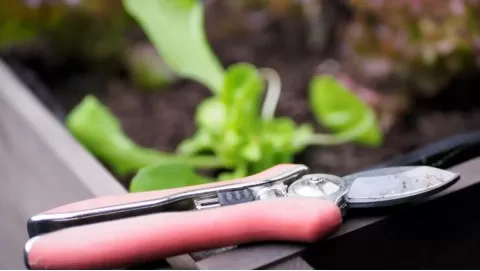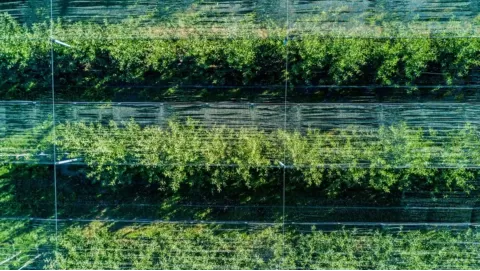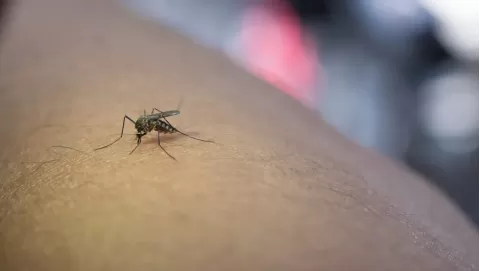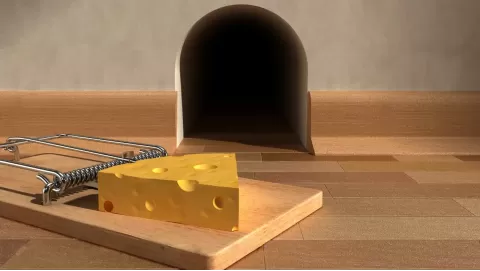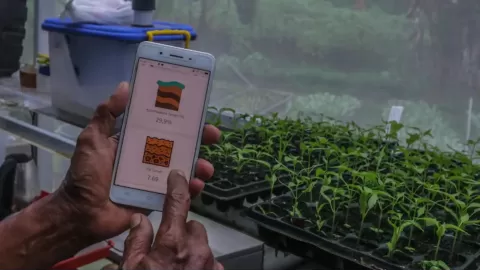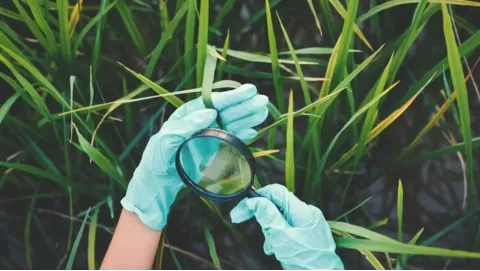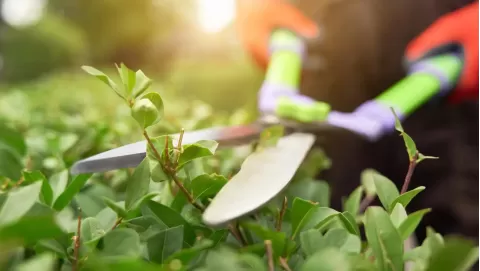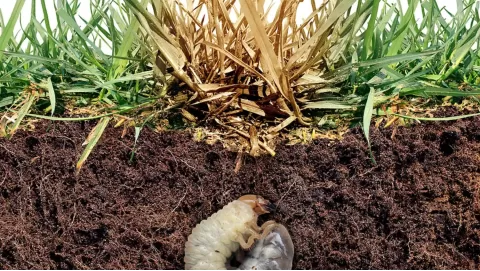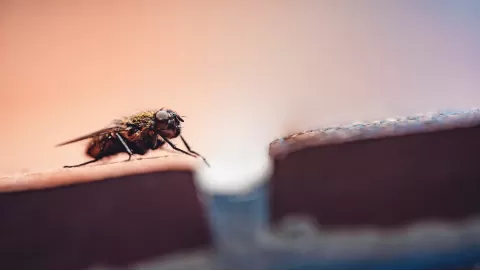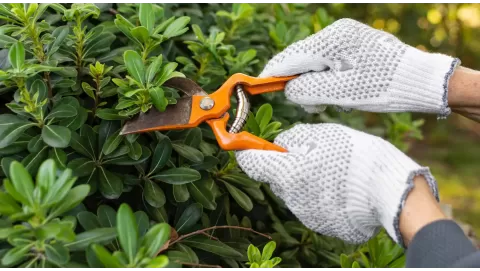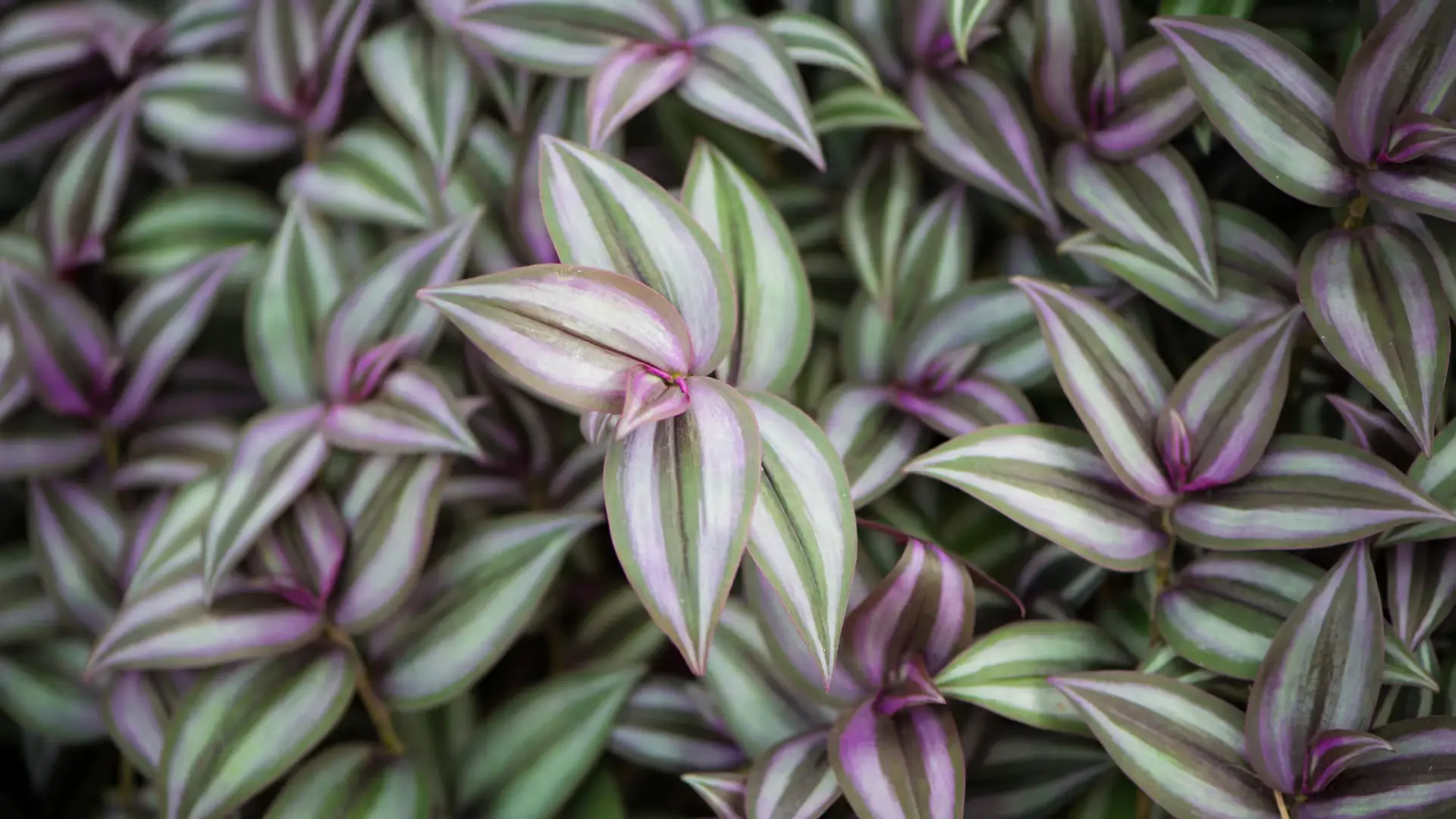
Growing and caring for the wandering jew plant: A complete guide
Plants play an important role in creating a beautiful and attractive garden. They enhance the aesthetic of a space, clean the air, buoy spirits and provide a link to nature. A plant that can beautify a garden is the Wandering Jew.
- What: The Wandering Jew plant is a popular, low-maintenance indoor plant with vibrant, trailing foliage.
- Ideal For: Hanging baskets, tabletops, and adding greenery to bright indoor spaces.
- Light: Prefers bright, indirect light to maintain its vibrant leaf patterns.
- Water: Allow the soil to dry slightly between waterings to avoid overwatering.
- Propagation: Easily propagated through stem cuttings placed in water or soil.
- Pro Tip: Prune regularly to encourage bushy growth and prevent leggy stems.
Fast-growing, easy-care Wandering Jew (also known as Tradescantia) is a common houseplant. It does best when you grow it in a hanging container near a window where it will receive bright, indirect light, but should be kept away from direct sunlight. This plant was originally found growing wild from Canada down to Argentina to a height of 1-2 feet. It is now the wood of choice for both indoor and outdoor gardens throughout the world.
Growcycle offers top-quality garden plants, including Wandering Jews, that can turn a shabby yard into a green oasis. This article will take a closer look at the distinctive characteristics of Wandering Jews and offer some advice on how to grow them and how to tend to them.
What Is Wandering Jew Plant?
Wandering Jew plants belong to the Tradescantia genus. They are favored as houseplants for their bright foliage and their tolerance of infrequent watering. These plants have had many different names in history, which tells a lot about their cultural importance. "Wandering Jew" derives from the plant's resilience and its long and far-reaching journey alongside the Jewish people.
The Wandering Jew is a beautiful plant with green, heart-shaped leaves streaked with purple and a silvery sheen. Leaves can be solid or variegated, depending on the variety. The flower consists of three petals, which may be also violet, white or pink. The wandering jew plant, also known as the inch plant, is a natural wild species that grows in the subtropical regions of North and South America.
Characteristics of Wandering Jew Plants
The wandering Jew Plant is a plant, a species of its very own. These are the key features of this plant:
- Wandering Jew plant leaves are green, heart-shaped, and have a silvery hue with purple stripes. Leaves are solid or variegated, as per variety. The flowers are small, 3-lobbed, and white to violet in color.
- It is a low-lying, slightly succulent perennial herbaceous plant that frequently develops dense mats or colonies. This is achieved mostly through the natural production of taproots.
- The wandering Jew is a proponent of prolific growth and spread. It looks good spilling over the sides of a hanging basket. When grown outdoors, it is a wonderful ground cover that can extend all over the ground.
- This plant can be grown indoors in a pot or outdoors in a garden as long as it receives adequate light and care. It enjoys warm, moist conditions, but can adapt to cooler indoor climates.
- It thrives in various conditions and fares a bit of neglect better than many houseplants. Its rapid growth makes it an excellent plant for filling space or simple propagation.
Related: Hydroponics products for sale
Types of Wandering Jew Plants
There are several varieties of Wandering Jew plant, and each has its distinctive leaf patterns and colors. Here are a few popular ones:
1. Tradescantia Zebrina
Despite the name, Tradescantia zebrina, which is also known as Zebrina pendula or inch plant, has silver and green striped leaves. It does well in bright, indirect light and likes to be kept a bit moist. The plant creates creeping vines and works well in hanging baskets or along shelves.
It reaches 6–8 inches in height indoors, but can grow 12 inches in the wild. Its tendrils can trail as long as 3 feet, cascading down as a result. This plant is native to Mexico and Central America and is a member of the Commelinaceae family. Its zebra-striped silver is covered in minute hair, so the leaves feel fine and velvety to the touch.
To care for this plant, leave it in a sunny place but not in direct sun to avoid damage to the leaves. Water when the top inch of soil feels dry, and mist the leaves occasionally to increase humidity.
2. Tradescantia Fluminensis
Tradescantia fluminensis, also known as Wandering Jew or small-leaf spiderwort, has vibrant green leaves. It can handle a range of light conditions from bright and indirect to low light. Plant likes to be kept moist and pruned well to stay bushy.
Fast-growing and native to South America, this plant self-propagates through its trailing stems. Their tiny samurai-sword shaped leaves are a punch of bright wherever you place them. Yet, it is classified as invasive in some locations, such as Australia and New Zealand, as it grows fast and outcompetes indigenous plants.
To care for this plant, keep it in bright indirect light and water when the top layer of the soil is dry. Do not over-water to avoid root rot. Pinch back stems often for a full, bushy shape.
3. Tradescantia Pallida
Also known as Purple Heart or Queen, the Tradescantia pallida has deep purple leaves. Thrives in bright, indirect light and well-draining soil. Its trailing habit makes it ideal for hanging baskets or garden ground cover.
Native to Mexico, this is a perennial from the family Commelinaceae. Lance-shaped leaves in either purple or magenta adorn its long branches. It also has small, three-petaled pink flowers blooming year-round to produce pretty pink fruit.
For best care, keep it in a bright location with indirect light. Do not pour excess water: This may lead to root rot. Easy to take care of, this plant tolerates different temperatures, so it can be placed in either an indoor or outdoor location.
4. Tradescantia Sillamontana
Tradescantia sillamontana is another species commonly referred to as Moses-in-the-Cradle, or Boat Lily, with distinctive green leaves on the surface and purplish-red beneath. The leaves are arranged in a rosette, which resembles the plant’s general shape. Its brilliant colors make it a popular choice for brightening interior or exterior spaces.
This plant loves bright indirect light and requires well-draining soil. Easy to care for and with a stunning appearance, it is easy to see why people are attracted to this intriguing plant for their garden and home.
5. Tradescantia Spathacea
'White Velvet' is actually named after the fact that it has wiry, silvery white stems that are soft with downy hairs, which make the plant feel 'fuzzy' to the touch. The leaves are small and round, bright green, for a fresh, life-like appearance.
This plant is adaptable and low-maintenance, and a favorite for home decor and gardens. Its color and texture can be found nowhere else, and it adds interest to any collection.
6. Tradescantia Albiflora
The leaves of Tradescantia albiflora are green with white center stripes and green edges. It is graced with small, white flowers as well. This plant is low maintenance and perfect for both novice and experienced gardeners.
7. Tradescantia Mundula
Tradescantia mandala is treasured for its stunning tri-colored leaves, firstly having pink-and-white stripes in the centre and green on the edges. The plant bears small pink flowers too, and can be a lovely addition to the garden or growing area.
8. Tradescantia Nanouk
Tradescantia nanouk is a popular hybrid known for its bright, triangular leaves in pink, green, and purple shades. There is a fuzzy texture to the leaves, which provides visual interest.
It also has small white flowers, which contrast against the colorful leaves. It’s great for indoor gardening or as a decorative item.
Related: Best Hydroponic Systems — The Ultimate Guide
Benefits of Wandering Jew PlantThe Wandering Jew plant is popular for its vibrant appearance and easy care. Here are some key benefits of having this plant:
Air Purification
The Wandering Jew plant is notorious for being one of the houseplants that help detoxify indoor air especially well by ridding toxins like formaldehyde, benzene, and toluene out of your home that can be lingering from everyday household objects such as paint, furniture, and cleaners. The plant also keeps a healthier indoor environment by absorbing these atmospheric pollutants.
- Improve Aesthetics
The leaves of the Wandering Jew plant have a distinctive pattern of colorful veins and stripes, and it is a stunning plant addition to any room. It makes a lovely hanging basket plant, a centerpiece in a tabletop container or a selection for ground cover in a garden.
- Versatility and Low Maintenance
The Wandering Jew plant is low maintenance, which is perfect for any novice grower or anyone who doesn’t have a lot of time to spare to tend to their plant. It’s super easy to grow and is pretty adaptable.
This plant is suitable for indoor or outdoor use. It is great in pots, hanging baskets, or on the ground as a ground cover. Its cascading stems are lovely, spilling over the sides of raised planters or mixed plantings.
- Easy to Propagate
The Wandering Jew plant is easy to propagate, so you can easily have more plants. This is a wonderful way to build your plant collection or give plants away as gifts to friends and family. Plants can easily produce several offspring.
- Health Benefits
Gardening and tending to plants can reduce stress and improve mental health. Taking care of a plant like a Wandering Jew, whose colors are bright and healthy, can help people feel proud and calm their minds.
How to Display Wandering Jew Plant?
To display a Wandering Jew plant, follow these tips:
1. Hanging Baskets
Hanging baskets are the best way to display a Wandering Jew plant. The plant's trailing vines create a beautiful green waterfall as they hang over the sides. Place the basket near a bright window to give the plant enough indirect light.
2. Macrame Plant Hangers
Use a macrame plant hanger to showcase the Wandering Jew plant. This creates a bohemian or vintage look. The macrame's neutral colors contrast beautifully with the plant's vibrant leaves. It’s also a great way to save space in small living areas.
3. Terrariums
The Wandering Jew plant grows well in larger terrariums, but it likes room to spread out. A terrarium keeps the right humidity for Tradescantia plants. To create a small jungle look, pair it with other humidity-loving plants, like moss or ferns.
4. Mixed Planters
Homeowners can put the Wandering Jew plant in a mixed pot with other plants to create an attractive look. Pair it with flowering plants or succulents that have different colors or textures. The trailing growth of the Tradescantia softens the planter's edges and makes the arrangement balanced and appealing.
Essential Care Tips for Wandering Jew Plant
Here are a few tips about how to take care of a Wandering Jew plant:
- Light Requirements
The Wandering Jew plant thrives off of bright, indirect light. It can tolerate lower light, although its colorful leaves will be most vivid in bright light. Don’t expose the plant to direct sunlight, as it can scorch the leaves, especially on those more delicate varieties (like Tradescantia fluminensis). If its colors are muted or the plant is leggy, it may require more light.
- Watering
Tradescantia does well in moist soils — they can even handle short periods of dryness. Water the plant when the soil at the top is no longer wet or as soon as the first inch is dry to the touch. Do not water the plants too much as they will get root rot. During winter, the growth of this plant slows, and watering will need to be adjusted.
- Temperature and Humidity
Wandering Jew likes it warm and moist. Best grown at 60°F to 80°F. It can get by with typical household humidity, but it prefers more, particularly in the winter, when the air inside is much drier. Use a humidity tray or mist regularly to keep moist.
- Soil and Fertilization
Best soil for Wandering Jew plants Wandering Jews prefer well-draining soil. A standard potting mix amended with perlite or sand allows excess water to drain. This plant can be fed by gardeners every four to six weeks with a water-soluble fertilizer during spring and summer. It is this that the plant thrives on. It’s best to reduce or stop fertilizing if your plant is growing slowly in the autumn and winter.
- Pruning
Pruning also matters for the Wandering Jew plant, as it enables it to produce a fuller appearance and stop it from becoming too leggy. Continue cutting the ends of stems every month to force the plant to branch. If the plant gets too long or unruly, cut it back hard. Gardeners can also use the cuttings to start new plants.
Common Issues and Solutions of Wandering Jew Plants
Here are some common issues with Wandering Jew plants and their solutions:
- Yellow Leaves: Yellow leaves may mean overwatering, underwatering, or poor light for the plant. Test for moisture in the soil, and then adjust your watering schedule as needed.
- Leggy Growth: If your Wandering Jew is long and skinny, it might not be getting enough light. If it’s growing toward the light, this means that it’s getting too little sunlight. So, relocate it to a brighter location or supplement with artificial grow lighting to encourage better growth.
- Pest Infestation: The Wandering Jew is susceptible to spider mites, aphids, and mealybugs. Check the plant often for signs of pests, including small webs, sticky residue, or visible bugs. If pests are detected, deal with them using Neem oil and separate that plant until you get on top of the infestation.
- Root Rotting: This variety of the Wandering Jew plant suffers from root rot when it’s watered too much, and the water is red, and the soil doesn’t drain well. This can starve the plant and cause it to wilt, develop yellow leaves, and give off a bad smell in the soil. To avoid root rot, use well-draining soil and pots with drainage holes.
- Discoloration: Browning or discoloration of the leaves in the tips can be due to underwatering, low humidity, or exposure to chemicals like fluoride, which is present in tap water. To take care of the plants, use distilled or filtered water and maintain consistent levels of moisture.
- Fungal Infections: Fungal infections can damage Tradescantia plants, especially if there is an excess of moisture or poor air circulation. Typical problems include powdery mildew and leaf spots. To avoid these issues, don't water overhead, and provide good air movement around the plant; and remove affected leaves immediately. Gardeners can also use fungicides if the infection is serious.
FAQs
Does Wandering Jew like sun or shade?
The Wandering Jew does best when growing in bright, indirect light that makes its colorful leaves pop. It can tolerate part shade, but not enough light will make its color fade. Do not leave it in full sun, which can burn the leaves. Most importantly, a good balance between light and shade will ensure the plant remains healthy and lush.
Is Wandering Jew an indoor plant?
Yes, wandering Jews are great indoor plants with colorful leaves and are easy to look after. It thrives in bright, indirect light and brings color to homes and offices. With its trailing vines, this plant is ideal for hanging baskets high up on shelves or windowsills, or it can serve as a table ornament to add a cool touch to any space.
What is the Wandering Jew plant used for?
The Wandering Jew plant is primarily grown for ornamental purposes. It gives light to the indoor spaces, hanging baskets, and outdoor gardens ,fair color and form. Its tall stems and pretty leaves are good for displays. It can be employed as ground cover in warm regions and is a great indoor air cleaner.
The Bottom Line
The Wandering Jew houseplant is an attractive and easy-to-care-for trailing plant that looks great in homes. It can add style to a living space, clean the air, and become a serene indoor garden. With proper care, it can provide an attractive addition to any home or garden for years to come.
Growcycle offers various indoor plant seeds to enhance the look of homes and gardens. Those with green thumbs can come to this market for plants for a lovely lawn or garden.
Disclaimer: This material is for informational purposes only and should not be relied on for legal, medical, financial, or any other form of professional advice.







